I am using this simple function to draw quad in 3D space that is facing camera. Now, I want to use fragment shader to draw illusion of a sphere inside. But, the problem is I'm new to OpenGL ES, so I don't know how?
void draw_sphere(view_t view) {
set_gl_options(COURSE);
glPushMatrix();
{
glTranslatef(view.plyr_pos.x, view.plyr_pos.y, view.plyr_pos.z - 1.9);
#ifdef __APPLE__
#undef glEnableClientState
#undef glDisableClientState
#undef glVertexPointer
#undef glTexCoordPointer
#undef glDrawArrays
static const GLfloat vertices []=
{
0, 0, 0,
1, 0, 0,
1, 1, 0,
0, 1, 0,
0, 0, 0,
1, 1, 0
};
glEnableClientState(GL_VERTEX_ARRAY);
glVertexPointer(3, GL_FLOAT, 0, vertices);
glDrawArrays(GL_TRIANGLE_STRIP, 0, 6);
glDisableClientState(GL_VERTEX_ARRAY);
#else
#endif
}
glPopMatrix();
}
More exactly, I want to achieve this:
